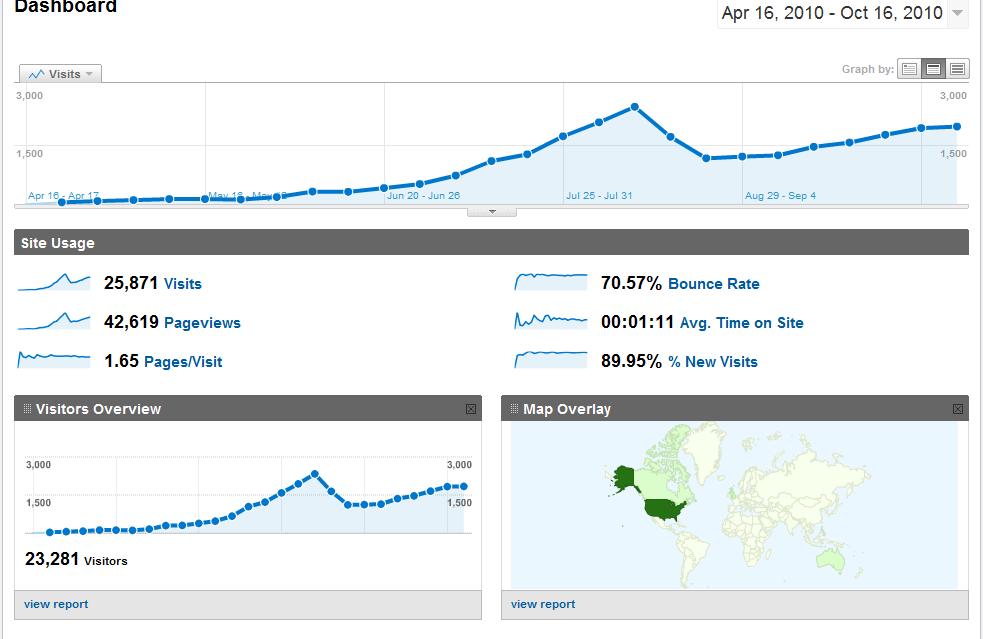One of our clients is an industrial engineer who works with servo motors. The big thing about servo motors (and the place where they intersect with your online marketing) is that they don’t just make machinery go. They also get information that tells them whether they should go a little faster or a little slower or to increase torque, or other motor-like things. In short, they get and respond to feedback.
You should also, when you’re thinking about your online marketing, get and respond to feedback. We’re really not talking about customer reviews and communications, though they can be an important part of your online presence. Each review is an individual response, reflecting a unique individual perspective. Reviews and emails also tend to be outliers — people who were happy enough or angry enough to go to the trouble of communicating with you or of writing out their feelings somewhere online.
It’s natural for us as humans to respond to a single review — the squeaky wheel gets the grease, after all — but making changes based on one complaint or deciding to change nothing because of one testimonial is nothing like a servomotor. It’s like waiting until the machine breaks down and responding to that.
I’m in a beta testing group for a Google product, a group of people whose volunteer job it is to give feedback on every little thing that goes wrong with the product. We’re talking here about little things: the leaves on the trees at this particular altitude on this particular spot with this particular browser are not as defined as they should be. With dozens of emails a day pointing out all the possible little issues, Google is able to find and fix things so precisely that their products end up working amazingly well. That quantity also means that user error gets cleared out.
You probably can’t recreate that level of testing, but you can get close by using analytics tools. Someone wrote to say how much she enjoyed your newsletter? That makes you feel good. The newsletter brings you a visible spike in traffic every month? That lets you know it’s worth doing. The spike was higher than usual in May? That lets you know that there’s something about that newsletter that worked better — so you should figure out what it was and do it again.
What analytics tools should you use?
- Whatever you do, make sure you test it. We use Google Analytics for practically everything, but there are some actions we take that can’t be tested as well there as with other tools. If you rely on social media, make sure you can test your posts and see which posts are most engaging for your audience. If you use email marketing, make sure you have tools that help you separate the part of your audience that is taking action from the part that doesn’t. If you blog, see to it that it’s easy to see the path from blog posts to conversions on your website.
- If you can’t test directly, figure out ways to align your analytics with results. Let visitors download a coupon at your Facebook page and capture the use of the coupon in stores. Add a “How did you find us?” field to your response form. Create a sweepstakes to make the paths to purchase more visible. Get creative — you can customize Google Analytics in many useful ways now, and you can use time and geographic data to extrapolate connections to physical-world events.
- When you see a possible trend, test it. Say it looks as though young women are responding particularly well to product photos on your Facebook page. This wouldn’t be a surprise, so you might respond by increasing the number of product photos directed toward young female shoppers. Instead, take a day or two and test the initiative closely, with conditions that are as controlled as possible. For the example, that might mean posting two such product images and a news item directed toward men for a couple of days, followed by two product images directed toward guys and a new item directed toward young women. Do you see the results you’d expect if the product images were having the effect you anticipated? If so, go ahead and make that change.
The third point leads us directly to the most important thing about feedback: it requires response. Looking at your data and sighing (or smiling) will make no difference. You must take action, test, watch the results, and take action. It’s an ongoing process, and it leads to excellent results.


Leave a Reply